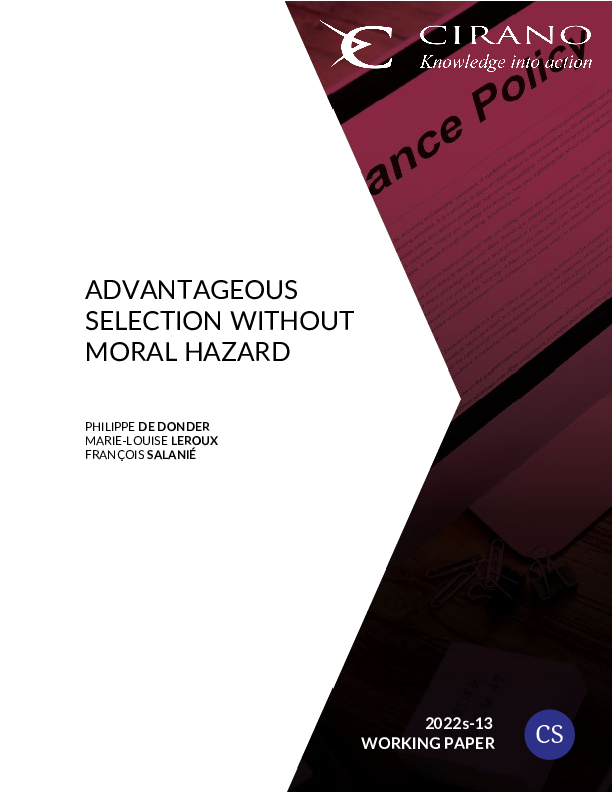Advantageous selection without moral hazard (with an application to life care annuities)
Advantageous (or propitious) selection occurs when an increase in the premium of an insurance contract induces high-cost agents to quit, thereby reducing the average cost among remaining buyers. Hemenway (1990) and many subsequent contributions motivate its advent by differences in risk-aversion among agents, implying different prevention efforts. We argue that it may also appear in the absence of moral hazard, when agents only differ in riskiness and not in (risk) preferences. We first show that profit-maximization implies that advantageous selection is more likely when markup rates and the elasticity of insurance demand are high. We then move to standard settings satisfying the single-crossing property and show that advantageous selection may occur when several contracts are offered, when agents also face a non-insurable background risk, or when agents face two mutually exclusive risks that are bundled together in a single insurance contract. We exemplify this last case with life care annuities, a product which bundles long-term care insurance and annuities, and we use Canadian survey data to provide an example of a contract facing advantageous selection.
To quote this document :
De Donder P., Leroux M-L and Salanié F. (2022). Advantageous selection without moral hazard (with an application to life care annuities). (2022s-13, CIRANO). https://doi.org/10.54932/NQVT3458




